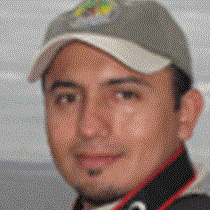Santa Cruz Island
Continuing with our expedition around this marvelous archipelago, today we arrived to the island of Santa Cruz. We were exited because this was going to be our first day with the symbol of the Galápagos Islands, the giant tortoises.
After our breakfast, we landed at the dock of the National Park in order to do a walk to the rearing center of giant tortoises. This was a really nice visit that gave our guests the chance to comprehend more about the conservation projects carried out in the islands. During our visit we found lots of baby giant tortoises; it was hard to believe that those babies, now only the size of an open hand, were going to grow to tremendous sizes and weigh up to five hundred pounds! We also found lots of adult tortoises from many islands with different types of shells, and the famous “one of a kind” Lonesome George, the last tortoise of his race from the northern island of Pinta.
In the afternoon, we had wonderful buffet lunch at an open air restaurant located in the highlands which provided us with enough energy to continue exploring the island of Santa Cruz. We went by bus to an open field of lush vegetation and here we discovered giant tortoises in the wild. Some of us counted and we tallied over twenty of the giant reptiles foraging in the vegetation at this site.
Soon we returned to the buses for a twenty minute drive further up the slopes of Santa Cruz. We next visited the geological formation called “The Twins,” and we walked through a forest composed of native and endemic vegetation. The dominant species were the Scalesia, an endemic giant daisy tree. We observed several species of Darwin’s finches on the trails that border the two pit craters; seeing a woodpecker finch was a highlight!
At the end of the day we came back on board with many fine memories. One of the things that surprised many of our guests was the presence of people living in the islands. Most people do not realize that the Galápagos Islands are inhabited, and that there is a population of over twenty five thousand people living on four of the islands.
Continuing with our expedition around this marvelous archipelago, today we arrived to the island of Santa Cruz. We were exited because this was going to be our first day with the symbol of the Galápagos Islands, the giant tortoises.
After our breakfast, we landed at the dock of the National Park in order to do a walk to the rearing center of giant tortoises. This was a really nice visit that gave our guests the chance to comprehend more about the conservation projects carried out in the islands. During our visit we found lots of baby giant tortoises; it was hard to believe that those babies, now only the size of an open hand, were going to grow to tremendous sizes and weigh up to five hundred pounds! We also found lots of adult tortoises from many islands with different types of shells, and the famous “one of a kind” Lonesome George, the last tortoise of his race from the northern island of Pinta.
In the afternoon, we had wonderful buffet lunch at an open air restaurant located in the highlands which provided us with enough energy to continue exploring the island of Santa Cruz. We went by bus to an open field of lush vegetation and here we discovered giant tortoises in the wild. Some of us counted and we tallied over twenty of the giant reptiles foraging in the vegetation at this site.
Soon we returned to the buses for a twenty minute drive further up the slopes of Santa Cruz. We next visited the geological formation called “The Twins,” and we walked through a forest composed of native and endemic vegetation. The dominant species were the Scalesia, an endemic giant daisy tree. We observed several species of Darwin’s finches on the trails that border the two pit craters; seeing a woodpecker finch was a highlight!
At the end of the day we came back on board with many fine memories. One of the things that surprised many of our guests was the presence of people living in the islands. Most people do not realize that the Galápagos Islands are inhabited, and that there is a population of over twenty five thousand people living on four of the islands.




